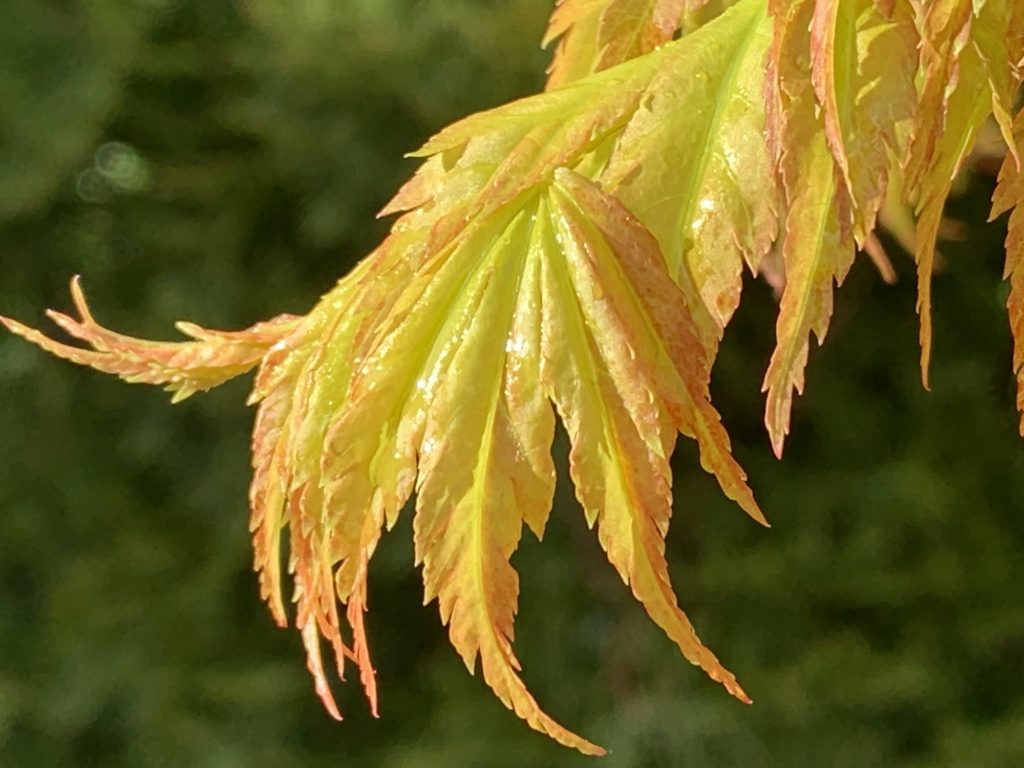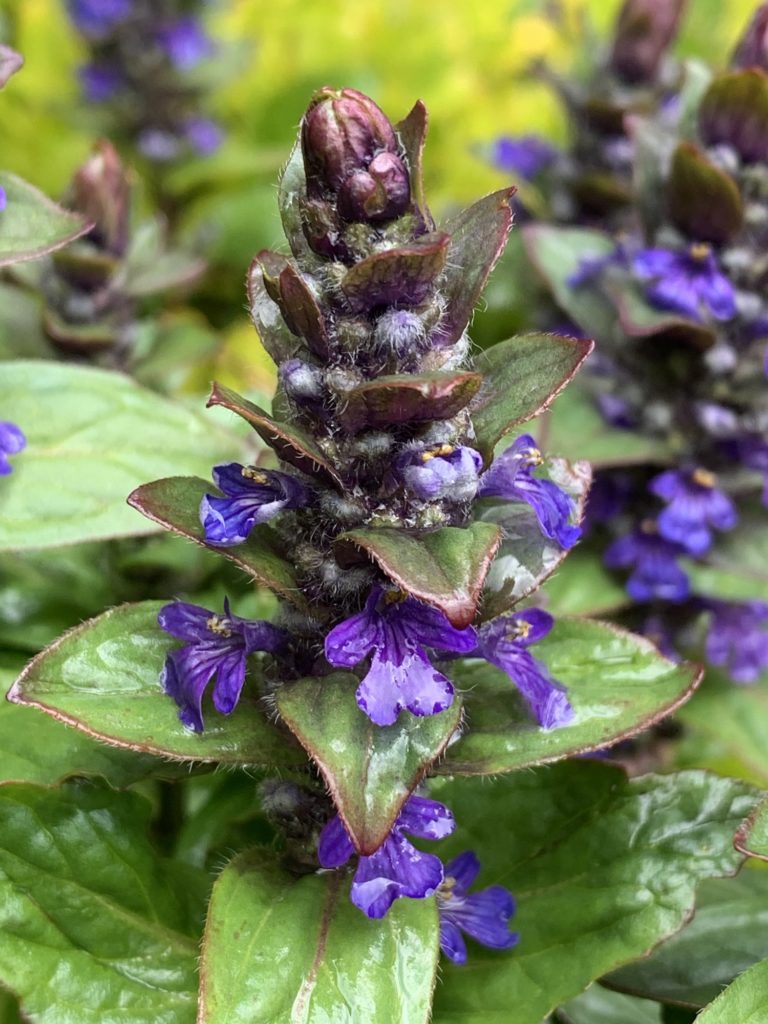
This guide is tailored for the western valleys of Oregon and Washington
YOU can help to make the world a better, a more friendly, loving and beautiful place by being a good steward of the spot on this earth, your garden, that you have been given the privilege of borrowing for a time. It is our hope that the following to-do list will help you to do just that.
Nathan, the Treevangelist, urges you to treat your spot on this planet like your own personal Garden of Eden. May it become your personal paradise. This is your divinely mandated responsibility. Your trees, shrubs, flowers and the wildlife in your yard will pay you back as they express their smiling appreciation to you and yours by radiating their love, joy and beauty bursting forth with vibrant and verdant life. Below is a to-do list to help fulfill this mission.
This month, the garden is popping with life as the naked deciduous trees and shrubs don their fresh seasonal leafy attire and celebrate the arrival of spring as they burst forth with all those pent up life-force juices ready to rock and roll. They’re beginning to flauntingly parade themselves down the garden’s catwalk with their fantasmic plethora and rainbowic panoply of colors from the lowly perennial primrose to the ostentatiously regal Mount Fuji cherry tree. Meanwhile, the birds are serenading us with their twitterpational love songs, and even the croaking frogs with their basso profundo tones are jumping into the garden’s three ring circus and trying to steal the show. So what more can be said? It’s time to get up and get out there and to join in! HalleluYah!
While you’re at it, take a few moments and scroll back through this same Good News Tree Service, Inc. blog and check out the archives for any tree and plant care articles that you may have missed. Also check out our YouTube channel at https://www.youtube.com/channel/UCvcu2lL9NpgoXQtUFYyQShw, our Facebook page at https://www.facebook.com/GoodNewsTreeService/ and our main website at https://goodnewstree.com. Please enjoy!
Readers’ suggestions on how to improve this list are gladly solicited. If you, the reader, have any suggestions for additions to this month’s list, please put them in the comments section of this article, and I will add them to the list. Thank you in advance! — Nathan
Tree and Shrub Care

- Fruit tree pruning. It’s time to finish pruning your fruit trees for fruit production. Also finish pruning your grapes, cane and trailing berries once the threat of major frost is past. Fruit trees can be pruned any time of the year, but it’s best not to prune them while they have flowers or fruit on them for fear of destroying part of your fruit harvest.
- Finish planting your fruit trees. By getting them in the ground in the winter or early spring, they’ll have time to acclimate to their new home before summer comes.
- Mulch. Apply two to three inches of mulch around all trees and ornamental shrubs. This helps to fertilize the plants and feed the soil, and also protects them against weed growth and loss of water when the warmer weather returns.
- Pine tree pruning. Finish pruning coast/shore pines (Pinus contorta) and Scotch/Scots pines (Pinus sylvestris). These two pines are especially susceptible to the sequoia pitch moth whose larvae burrow into the tree trunks during the growing season (April through September) causing the trees to exude large amounts of unsightly pitch globules. While this seldom kills the tree, the bleeding of sap is not good for the overall health and vigor of the tree. It is advisable, therefore, not to prune these pine trees during the growing season, since the pruning cuts attract the moth, which then lays eggs on the tree, which hatch into tree-burrowing larvae. Pruning should be done on your pines from November to March.
- Plant or transplant trees and shrubs. Early spring is still a good time to plant or transplant ornamental trees and shrubs. Cooler weather means less transplant shock to the plants, and over the winter and spring, they will have time to begin to acclimate to their new environment before the stress of the next summer season occurs.
- Pruning of large trees. Most trees in the temperate western valleys of Oregon and Washington can be pruned anytime of the year. If you’re not sure what to do, or how to do it, call Good News Tree Service, Inc. for a consultation, pruning lessons or to have them do the pruning for you.
- Pruning of ornamental shrubs. Early in the spring before a lot of new growth starts is a good time to do major pruning (called heading back) of rhododendrons (or rhodies) and other similar ornamental shrubs back to latent buds in trunks and stalks. Do this before spring growth begins in the near future.
- Prune fast growing ornamental shrubs that are beginning to look shabby. You may need to prune them again in the early summer for a more neat and manicured look.
- Reparative pruning. Repair winter damaged to trees and shrubs.
- Tree and shrub removal and stump grinding can be done all year long.
- Trees. Have an ISA Certified Arborist with an ISA Tree Risk Assessment Qualification (like Good News Tree Service, Inc.) inspect your large trees for the potential of failure due to weak root systems and defects in trunks and branches. This is best done when the leaves are off the trees.
Plant Health Care
Good News Tree Service, Inc. provides full plant health care services as listed below.

- Apple scab on ornamental crabapple and fruiting apple trees. The first visible symptoms occur on leaves in spring as pale, yellowish, water-soaked spots the size of a pinhead. These enlarge, becoming darker and smoky in appearance, later taking on an olive shade and ultimately a brownish black color. Spots may be any shape but are frequently circular. Young infections often show a radiating spread of fungal tissue through the leaf, and such areas later appear as irregular, brown-colored infections. Diseased leaves can be curled and distorted and often drop early. This fungal disease can also move into the fruit to produce a scabby effect, hence the name “apple scab.” Several fungicidal sprays are required to control this disease just prior to flowering and after flowering.
- Arborvitae Twig Blight (Thuja occidentalis): Spray in the spring and early summer when new growth starts at two week intervals.
- Birch Rust Fungus: Occurs on leaves. Spray before symptoms appear on 10 to 14 day intervals—4 apps if infestation is severe.
- Cherry Tree Brown Rot Blossom Blight (Monilinia fructicola):Make 3 foliar applications starting at bud break and at 14 day intervals.
- Coryneum Blight (Shot Hole Fungus) or Cherry & Plum Leaf Spot: This leaf blight affects ornamental and flowering cherry, plum and prune trees. Apply fungicide in the spring at flower petals fall, shuck fall and two weeks later.
- Crabapple Leaf Blight. Apply fungicide as the leaf clusters are just opening up and make several more applications subsequently as per label directions.
- Deep Root Fertilization: Trees and ornamental shrubs—deep root fertilize to promote lush, healthy-looking and vigorous crown growth. Urban soils tend to lacking in many of the nutrients that trees and shrubs need to survive. Many are malnourished or are starving to death, which is why they don’t look radiantly healthy are struggling with pest issues. Deep root fertilization helps to promote healthy-looking and pest-resistant trees and shrubs. The best time of the year to do this is in the spring and fall.
- Dogwood Anthracnose: Begin spraying with a fungicide at bud break and continue at 10 to 14 day intervals.
- Dormant Spraying of Fruit Trees: Continue fungal sprays until after flower petals have dropped off.
- Magnolia Bacterial Blight: Apply one fungal spray in fall and twice in spring near budbreak.
- Lawns: Fertilize lawns.
- Leaf Blights: Spray trees and shrubs for fungal leaf diseases (e.g. powdery mildew, leaf blights, dogwood anthracnose, needle blights, etc.).
- Monitor trees and shrubs for insect pests. When piercing and sucking plant pests (e.g. aphids, lacebugs, scales, weevils, mites, etc.) hatch varies each year depending on when the warmer weather begins. Usually, hatching of plant pests begins from early to late April. When consistent warm weather begins to occur, start monitoring plants for insect nymphs and adults. If necessary, plan a course of action to treat your trees and shrubs against these pests.
- Pear Rust: Apply fungicide in early spring about bloom time as the orange fungal telium (pl. telia) begin to appear.
- Photinia Leaf Spot: Spray with a fungicide as new shoots are developing at 30 day intervals.
- Piercing/Sucking Insects: Continue applying systemic insecticides against piercing sucking insects (aphids, lacebugs, scales, weevils, etc.) via soil injections (one treatment gives season-long control).
- Pine Dothistroma Needle Blight: Apply fungicide at just before bud break and a few weeks later.
- Powdery Mildew: Apply a fungicides as soon as symptoms appear. Best efficacy occurs if used before symptoms appear. Use fungicide at 7 to 14 day intervals, or more often if conditions warrant it. If a plant is known to have had powdery mildew previously, apply as buds start to open.
- Spider mites will start to become active as the weather warms. Systemic insecticides are available against this pest.
- Tent Caterpillar: Apply systemic pesticide for season-long control.
- Verticillium Wilt: Soil drench in the spring. Maples are especially susceptible to this fungal root disease as are cherries and plums.
- Willow Twig Blight (scab): Apply two or three applications beginning when new leaves first appear at 10 to 14 day intervals.
Elsewhere in the Garden

- Put slug bait around your flowers and tender plants such as hostas.
- Apply two to three inches of mulch (e.g. bark dust, garden compost or wood chips) on all of your shrub beds. Covering bare dirt areas in your yard with mulch helps to prevent soil compaction from rains, and weed growth, and helps to enrich our heavy clay soils.
- Begin planting annual and perennial flowers.
- Cut English ivy off of the base of trees. (This can be done any time of the year.)
- Feed the birds. Dutifully maintain your bird feeders. Bring life and excitement to your backyard by turning it into a bird sanctuary. The birds will thank you for your generosity by providing you with hours of entertainment, and by eating insect pests that harm your ornamental trees and shrubs. Birds in the yard are not only fun to watch, but they perform the vital task of eating harmful insects.
- Start making plans for your vegetable garden. Once the soil has dried out, you can begin working it for planting our veggies. Usually this will occur in late April or early May and sometimes later depending on the weather. The earlier you plant, the sooner you’ll be feeding on delicious veggies from your own garden!
- Plant new lawns. Fertilize your lawn. Aerate and dethatch.

- Continue to keep your bird feeders full. Why? Even though we’re now past the winter season and there is more food available for the birds, having these feathery friends frequent your garden serves several purposes. First, they bring life and excitement to your backyard by turning it into a bird sanctuary. Second, your singing friends will thank you for your generosity by providing you with hours of entertainment, and by eating insect pests that harm your ornamental trees and shrubs.
Happy gardening!
